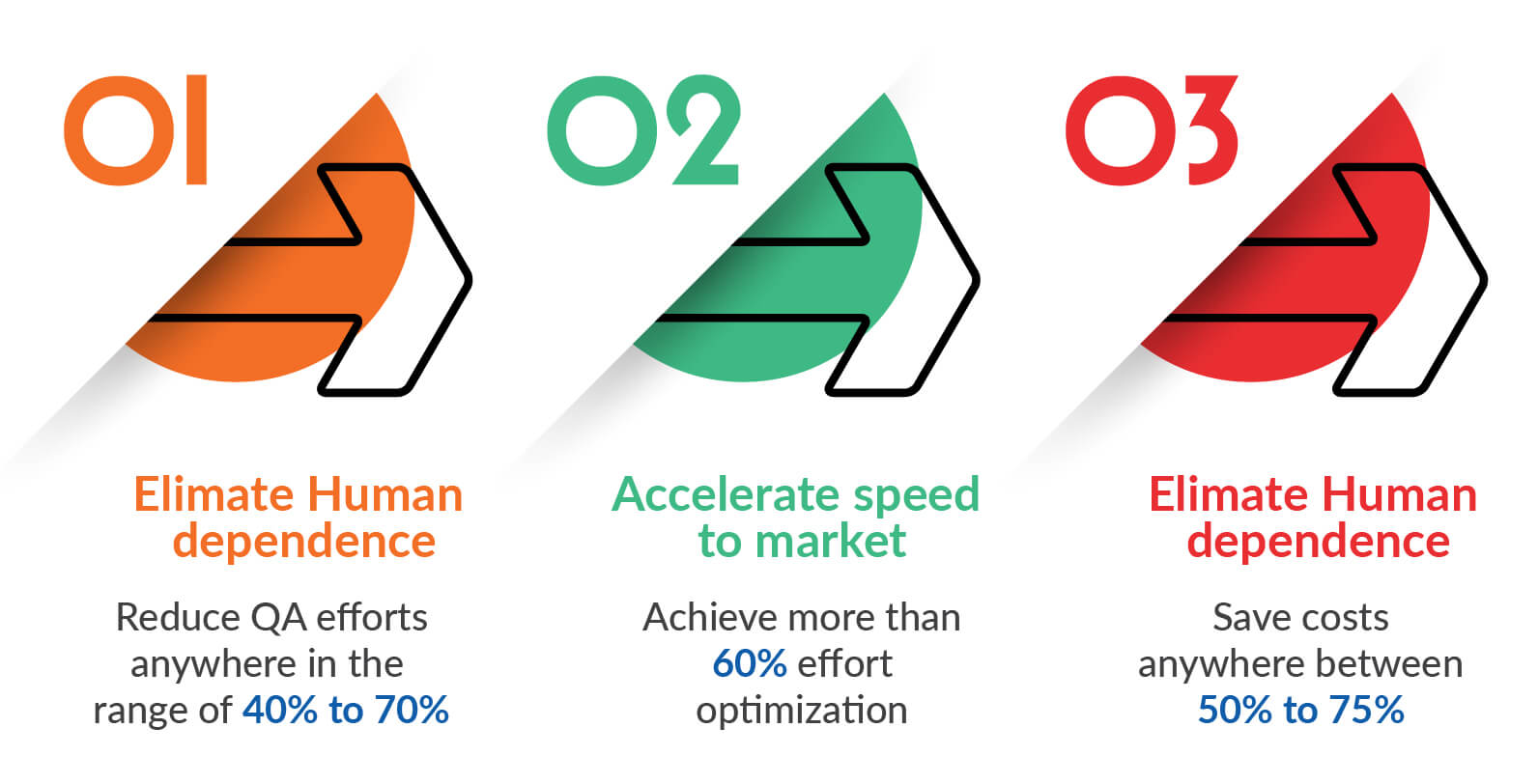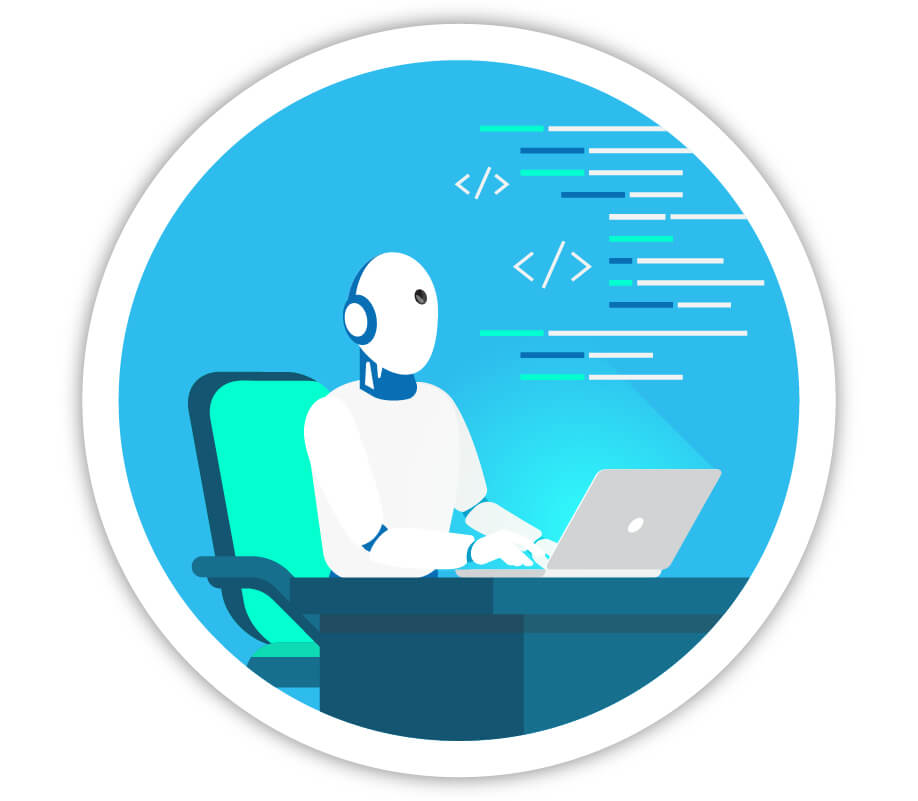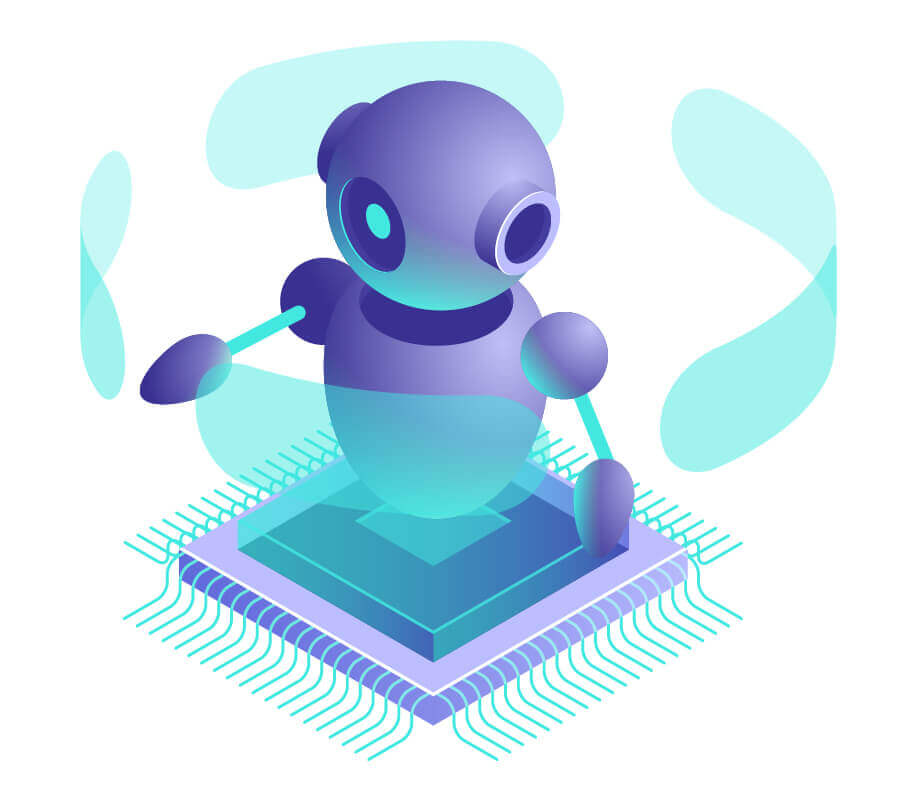This website uses cookies. By continuing to browse the site, you are agreeing to our use of cookies
Transition to the Next Level of Automated Software Testing – Embrace Autonomous!
Testing
August 11, 2020
Testing is one of the essential steps in software development. However, sometimes the time, effort, energy and resources for testing outweighs the actual development of the software. We have seen that Quality Assurance (QA) teams struggle, especially when deadlines are close. The current scenario is that software testing has been offloaded from a completely manual process to automation-based systems which helps fast-track the go-to-market for a product or application and save cost. Automated Software Testing is thus imperative for organizations to scale with speed.
According to Gartner’s Competitive Landscape Application Testing Services report published on 25 September 2019 by Susanne Matson, “By 2021, intelligent automation will generate an additional 20% savings over what is achievable today in application testing services for end-users.”
Despite such known benefits, we have found that 80-85% of testing is still done manually. We have also observed that most QA teams are well-versed with Test Execution automation such as smoke tests, regression tests and have progressed to in-sprint automation. However, there are challenges in the level of expertise and maturity required to achieve automation for other activities like Test Requirement Analysis, Estimation, Planning, Design, Maintenance, etc. The survey given below from Forrester throws more light on how organizations are leveraging technologies.
Forrester View
Which of the following describes the approach you are taking in using AI and ML for software testing?

Base: 1,204 global developers whose firms use AI and ML to test better and faster to increase quality
Source: Forrester Analytics Global Business Technographics® Developer Survey, 2018
While it is a healthy endeavor to devote a lot of workforce and resources for software testing, there are ways to perform better at lower costs.
Artificial Intelligence, Machine Learning and Deep Learning offer immense possibilities for making work faster and better. This affords an opportunity to rethink automation beyond Test Execution and take it to the entire lifecycle. To enable speedy, cost-effective and high-quality deployment of applications, the logical next step is to make the testing process human-independent, self-learning and self-healing – in other words, Autonomous!
What separates autonomous from automation is the degree of independence. We see autonomous vehicle as a holistic system which operates the majority of its functions independently from a driver. Similarly, autonomous software testing is an integrated system of automation that autonomously aggregates the data that it learns from the tasks that it performs, and uses that to test the task with more speed and accuracy.
How Autonomous Testing can help your organization?

Eliminate human dependence

Clients can eliminate almost all the manual efforts that go in the testing activities, including decision making based on metrics, which is not possible with just automation. The complete implementation of autonomous testing use cases would not only deliver unprecedented speed and quality in DevOps environments but also substantially reduce QA efforts anywhere in the range of 40% to 70%, depending on the current QA maturity of the customer. Know more about how to eliminate human dependence in testing.
Accelerate speed-to-market

Deploying automation platforms at every stage of testing can ensure smooth navigation across all levels of testing. We noticed that enterprises are able to achieve more than 60% effort optimization with a steep surge in quality and increased end user customer satisfaction, thus accelerating speed-to-market of a rigorously tested quality product.
Make testing cost effective

The opportunity cost of not thinking autonomous to support the pace of change is multi-fold. Typically, the QA spend would be 15-40% of the overall application development and maintenance spend for any organization. To reduce these costs, we have built a set of 50+ use cases, which when implemented in an enterprise would result in cost savings anywhere between 50% to 75% with unprecedented improvement in quality and customer satisfaction.
End-to-End Autonomous Software Testing – Our Approach

We have pioneered the idea of Test Automation for a period of 15 years now and enabled many organizations to achieve quality, speed and cost benefits with an Automation-First Architecture.
Graduating from automation to autonomous, we offer end-to-end autonomous software testing solutions, from consulting to final delivery, to transform your testing and fast-track business success.
At the process level, organizations can take a maturity level assessment to help us understand an organization’s current level of maturity for autonomous testing, tailor the assets as per needs and implement priority use cases for achieving the best bang for the investment buck. We leverage our Autonomous Test Orchestration Platform to execute these use cases. The platform takes advantage of various types of data generated across the software development lifecycle to arrive at patterns, derive inferences by applying AI algorithms to make real-time decisions. In the present scenario, these decisions are made by the subject matter experts of quality assurance teams.
As mentioned above, we have built a set of 50+ use cases across the length and breadth of each individual phase of the QA lifecycle, factoring in Artificial Intelligence and Cloud. These use cases would mean a world of difference for organizations to move forward from the old-world drudgery of traditional QA. There is an entire toolkit which includes all the essentials and platforms for assessment and testing and provides a 360-degree product view for all your software testing needs.
Take the leap and enable the transition from Automation to Autonomous. Contact us for a demo.
Related Blogs

Transformative Impact of Generative AI on the Autonomous Testing Landscape
- Testing
- Generative AI

Leveraging ChatGPT for Effective Software Testing: Opportunities and Challenges
- Testing
- Generative AI

Ready to Pursue Opportunity?
Every outcome starts with a conversation
















